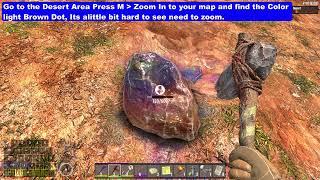Комментарии:

Thank you for this detailed explanation, i have a test tmrw and this helped alot
Ответить
i think you could've also explained what channels are, but this is still a great explanation!
Ответить
Sound is a longitudinal wave of compressions and rarefractions. It goes ahead to show how a digital microphone which is used to capture sound by generating an analogue electrical signal that represents the original analog sound wave was illustrated. The process of analogue to digital sound conversion is called digitisation of sound and sample rates such as speech quality(8khz) which is used by VIOP applications and telephone voice calls, and cd quality(44.1khz) among others.
Kalabo Ebitari Robinson
Department of microbiology

My first digital recording was through a Dragon 32 home computer, through the joystick 4bit analog port. Pink Floyd, Dark side of the moon. The sound quality wasnt great, it was bad, but it was a bit magic, I have the cassette somewhere
Ответить
Too bad you are sticking with the misleading “stairstep” representation of the reconstructed signal. Too often this is used as a faulty argument that digital audio is inferior to analog original, whereas properly filtered digital signals will perfectly reproduce the analog original.

I may have a little correction for the video. AUDIOFILES argue that compressed digital sound is inferior.
Ответить
Thanks, you're a life saver.
Ответить
As electrical engineer this video really is incomplete, over simplifies, at times is wrong although not overtly (there would be ZERO added fidelity to additional sampling in the example shown at first, and with digital audio the law pass filter used in the recording would block out the frequencies shown in the the second example). If you really want to know what's going on look up Nyquest-Shannon, it's a beautiful thing.
And the bit rate only changes the dynamic range of the recording.

Honestly.. You explained so well..
Tomorrow is my exam... And thank you so much for clearing these concepts efficiently .. May God bless you

great summary. thank you!
Ответить
this is sick ty
Ответить
Three advantages of digital music in hindi pls
Ответить
I am an audio professional and educator, and this is hands down one of the best explanations of digital audio I have ever seen!
Ответить
Well summarized!
Ответить
Should be noted that there are limitations of quality of audio file that people can perceive and, from my experience, 16 bit, 44100kHz audio quality is enough to imitate a natural-source sound, the only variable not removed being the quality of speakers. (This conclusion could be drawn from the video, but it's not in the summary, so i'm pointing that out)
Ответить
Can you explain how DSD works differently from PCM?
Ответить
Yes the 1 that use Jason AI
Ответить
It is verrry amazing I'm CS student and it is soooooo much exciting.
Ответить
Mega thanks can u upload cat application program that uses Jason AI
Ответить
Great video! and a great accent too!
Ответить
When I convert my audio file in FFMPEG, I see their pcm_S16 le audio codec. And I was amazed at what the bit depth and sample rate were.
Ответить
Very nicely explained for people like myself that have to sometimes work with audio but haven't followed any specialized training for audio engineering!
If you're considering taking suggestions for the next videos, for the topic of audio it'd be great to know some basics behind the "codec", the challenges of streaming audio from disk and / or the challenges of ensuring the sound is played when it's needed when working in a multithreaded environment (ie. any modern OS).
Keep up the good work!

U are a legend keep doing this series hope u take it to the next level , and make it coherent, thank you
Ответить
Excellent video.
Ответить


























